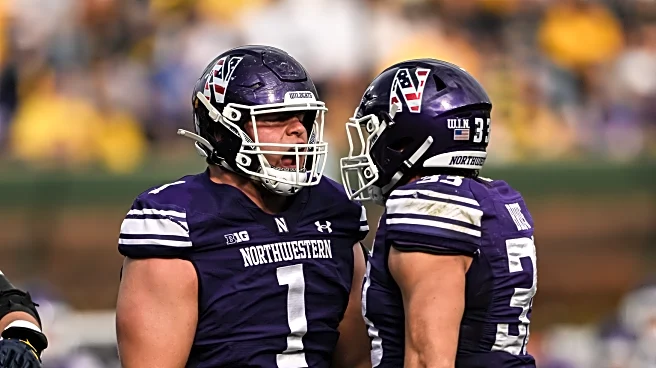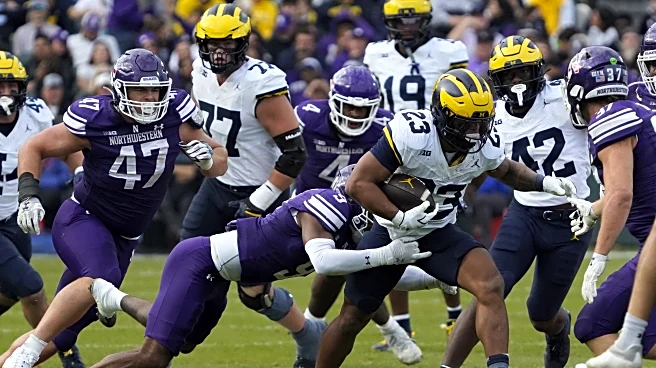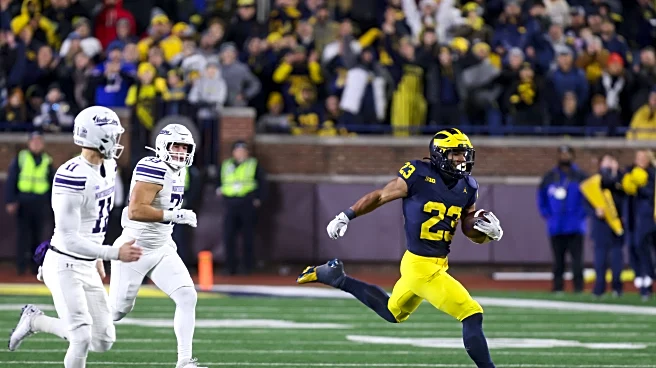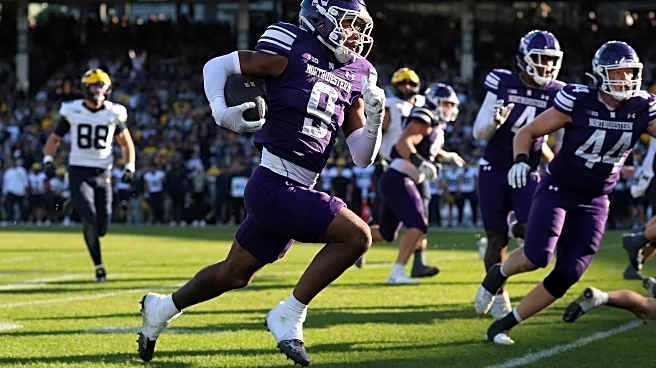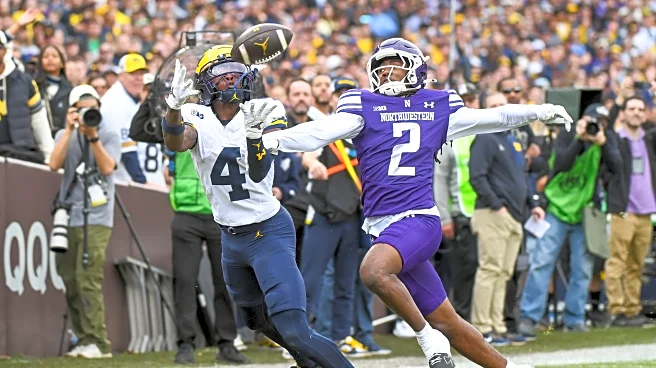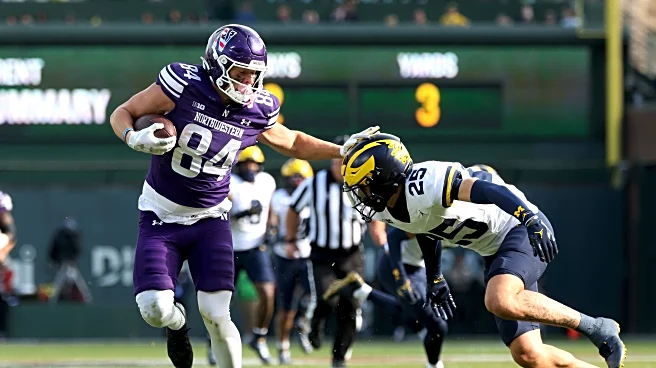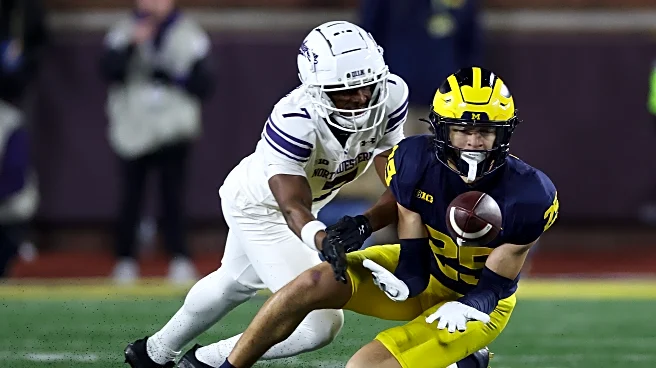The odds were stacked against Northwestern. No. 18 Michigan was an 10.5-point favorite and had an 83.3% chance of winning Saturday’s game per ESPN Analytics’ win probability tracker. It’s obvious that beating the ranked Wolverines would’ve been a monumental upset, undoubtedly shocking much of the college football world.
NU was right on the doorstep of making that happen. The ‘Cats had a fourth-quarter lead AND possession of the ball with less than four minutes remaining, and the defense had the Wolverines
in shambles after ceding their fifth turnover.
Instead, what looked to be potentially the greatest win of the season turned into the most heartbreaking. A prime chance to stamp a bowl game bid was left behind at Wrigley Field, a place the ‘Cats still have yet to win a game.
Northwestern’s opportunities aren’t over yet, as a pivotal game against Minnesota looms large next week. Here’s what the ‘Cats can takeaway from this loss and learn from through this final stretch.
Northwestern’s defense carries the team again
Good defenses force offenses to execute at a high level and earn every point. When the defensive line and secondary are in sync, opposing teams have no shot unless running backs choose opportune routes, quarterbacks make accurate throws and coaches make creative play calls. It forces the offense to be a well-oiled machine and avoid any self-inflicted wounds, as good defenses will take advantage of those immediately.
Northwestern’s defense on Saturday was by no means marvelous. It got gashed on the ground, giving up 280 yards in the air — 189 of those courtesy of a breakout performance from Michigan’s Andrew Marsh — and 316 yards on the ground courtesy of it playing a top-10 rushing attack. Michigan had 25 first downs compared to Northwestern’s 11, and failed to hit on one of Inside NU’e keys to the game by winning time of possession.
But the Northwestern defense succeeded in the one metric that makes up for all else: forcing turnovers. Through aggressive defensive plays at the line, great instincts in the secondary and an excellent job sensing and taking advantage of Wolverine mistakes, Northwestern garnered a remarkable five takeaways. Despite getting beaten in every other statistical category, those turnovers justify significant praise and warrant this being considered an impressive defensive performance for the ’Cats, one that showcased the work they’ve put in to improving that side of the ball this year.
With Robert Fitzgerald and Braydon Brus flying all over the place, making Michigan earn every yard and pouncing on its miscues, it was the exact play style NU needed against a high-powered Wolverine attack. The defense did everything it could to help Northwestern win this game, as it has done in plenty of games this season. The Wildcats’ status as a defense-first team might not have been expected by everyone to start the season, but that’s what this squad has become.
Late-game offense needs fine-tuning
While separate aspects of a sports team, it’s obvious that a team needs a positive relationship between its defense and offense to garner success. An inverse relationship can sometimes be withstood, as teams can and often do win in college football even if one side of the ball is struggling. But when playing ranked teams like Michigan, having a great defensive stand must be followed by a productive offensive attack — and vice versa.
As established above, the defense did its job especially when it mattered, picking up three of its five turnovers in the fourth quarter. Michigan became the first college football team to win a game with a turnover margin of minus-5 or worse since Oct. 26, 2024. While ranked teams like Michigan are resilient and cannot ever be counted out, it was an improbable feat that Northwestern only has itself to blame for, particularly in its final drives.
First off, the clock management deserves criticism. In the fourth quarter, NU had two separate possessions with the lead. It’s obvious what the two primary goals of drives like those are — to kill the clock and pad its lead, in that order. Instead, the ‘Cats only shaved off a combined 3:37 in those two drives combined. Back-to-back 3-and-out plays made it impossible to capitalize on the two crucial turnovers picked up by the defense. More importantly, it gave Michigan plenty of time to execute a game-winning drive, with only a field goal needed to secure a victory.
The specific play calls in those final fourth-quarter possessions were also perplexing. Rather than leaning into the running game to ensure the clock runs along with picking up yardage through a less risky way (Michigan had already given fans enough turnovers to watch), Zach Lujan called two straight pass plays on the second-to-last drive, facing a second-and-9, and opened its final possession with a shotgun throw from Preston Stone where he could not connect with Griffin Wilde. The latter play, in particular, was confusing: facing a first-and-10 with just over four minutes to play, there was no reason to force Stone to make a throw and risk burning a down in the process. While the holding penalty was the primary reason the drive stalled, the late-game offense was not strategic, couldn’t get anything going and let two critical plays by the defense go completely to waste. It’s the single biggest reason the ‘Cats lost this game, and it cannot happen against Minnesota.
Get the run game going
While credit is given to Michigan’s defensive line for its run defense much of the game, Northwestern’s running backs were relatively quiet Saturday afternoon. NU’s rushers only had 61 rushing yards overall, paling in comparison to Michigan’s 216. In fact, running Jordan Marshall had over double of the ‘Cats entire running back room combined, rushing for 142 yards.
For Northwestern, Caleb Komolafe rushed for just 31 yards and averaged 2.6 per his 12 carries, all well below his season averages. Joseph Himon II had 31 yards on just 9 carries, while the rest of the running back room got very few touches. While Komolafe recorded a touchdown run, neither player found success most of the game and didn’t make the sizeable impact needed to move the fall downfield and maintain offensive momentum.
NU’s ground game has maintained its effectiveness since losing Cam Porter to injury. It’s imperative that the ‘Cats don’t overreact to Saturday’s game and continue to lean on the running backs as an engine of this offense. The versatility and physicality cannot be underestimated, and as has been a common storyline throughout this season. Being passive with the run game puts unneeded pressure on Stone to make big plays and leads to an imbalanced offensive scheme. The ‘Cats have to ensure Komolafe and Himon II are getting ample carries early and often against Minnesota.
